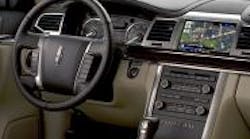“A meaningful take-away from this work is how objective measurement techniques, such as heart rate monitoring with a high level of sensitivity to changes in stress, can deepen our understanding of the extent to which individuals trust and are comfortable working with new technologies. This represents an important step in enhancing the design of future technology, improving safety, minimizing stress and contributing to well-being.” –Bryan Reimer, associate director of research, New England University Transportation Center at MIT
While these research findings should definitely be filed under the “DUH!” category, it’s important to recognize that we now have actual data to examine regarding how certain kinds of in-vehicle technologies can reduce driver stress. That in and of itself is a critical starting point for studying the entire in-vehicle environment not only to see what kinds of systems reduce driver stress but which ones may increase it as well.
The research in question comes from a recently completed nine month study conducted by Ford Motor Co. and the Massachusetts Institute of Technology’s (MIT) New England University Transportation Center (NEUTC).
This study monitored drivers as they performed perceived "high-stress" tasks such as parallel parking and backing out of parking spaces with restricted visibility. Ford and MIT said both self-reported stress levels and objective “physiological” measures used to monitor driver stress load dropped considerably when drivers used technological aids in these situations, such as Ford’s “active park assist” system.
[You can watch Ford’s “active park assist” program in action in this clip below.]
Those “physiological” measurements, by the way, refer to the heart rate and other biometric indicators of the human candidates involved in the study – so, yes, these folks were all wired up while behind the wheel conducting these maneuvers.
In researching the “stress effect” of Ford's active park assist system, 42 people candidates were involved, equally distributed between males and females across three age groups, MIT said – drivers in their 20s, 40s and 60s.
Prior to testing, each of the subjects was given an in-depth briefing and demonstration of both the technology at the focus of the study as well as related systems. They then gained experience with the systems prior to the defined assessment period. For example, in the parallel parking study, subjects were given three practice opportunities in a Lincoln MKS sedan to both manually parallel park and use Ford's active park assist feature to grow accustomed to the technology, noted Bryan Reimer (at right), associate director of research for the NEUTC at MIT.
Following this introduction, each of the test drivers was monitored using heart rate as an objective method of assessing driver workload and stress on the road, he said. In addition, a subjective measure was monitored by asking subjects to rate their perceived stress level at the completion of each driving maneuver, with detailed evaluations of their experience and impressions of the technology collected at the end of the experiment.
"The test subjects averaged more than 12 beats per minute lower heart rate when using the active park assist system compared to manually parallel parking the vehicle in what was a highly statistically significant decrease," Reimer noted. "The substantial changes in the objective physiological markers of driver stress, coupled with changes in perceived stress, suggest that the driver's well-being can be increased through this technology."
Data from the initial 10-second anticipatory period prior to initiating the functional maneuvering of parking also had relevant results. During this period, there was a moderate but highly significant difference in heart rate depending on whether the driver was about to use active park assist or park manually, he explained.
During the evaluation trials when drivers were anticipating engaging in a manual parking exercise, mean heart rate was 75.9 beats per minute. During the evaluation trials when drivers were anticipating parking using active park assist, heart rate was 72.5, or 3.4 beats per minute lower. This indicates that prior to the physical work involved in maneuvering the steering wheel to manually park, the anticipation alone associated with undertaking the task was more stressful than when drivers were anticipating parking with the help of technology, Reimer said.
This difference is particularly notable in that it was observed in individuals who had only had the opportunity to develop experience and trust in this technology for a relatively limited period of time, added Bruce Mehler (at left), research scientist at MIT’s NEUTC.
“While more than 76% of the participants indicated that the active park assist system made it easier for them to parallel park, developing a better understanding of the participants’ other responses can provide important insight into how further gains in technology adoption and stress reduction can be obtained,” he said
By the way, it should be noted that this study isn’t a “one off” between Ford and MIT – rather, it’s an extension of an ongoing alliance between the two to improve driver focus, wellness and safety through the integration of vehicle technology.
[Below, you can view some of the other vehicular work MIT, NEUTC and it’s unique “AgeLab” are conducting, particualrly the “AwareCar,” which is designed to help better understand the driver’s state of mind, the role of health and wellness in driving, plus the use of in-vehicle systems as a means to improve driver performance.]
OK – so this is all great information for car drivers. What about truckers? If a similar series of studies could be done using truck drivers, think of the insight that could be gained: What technologies lower truck driver stress? Which ones might increase it?
Wouldn’t it be interesting to find out how driver stress levels react over time to lane departure warning (LDW) indicators? Or blind spot detection systems? How about the response to turn-by-turn on-board navigation by voice technology?
If anything, though, this Ford/MIT study shows that technology – in the right circumstances, after given instruction and training on how to use it – can make the driving experience that much less stressful. That’s an insight that should be considered as more in-vehicle systems get ready for prime time with drivers.



